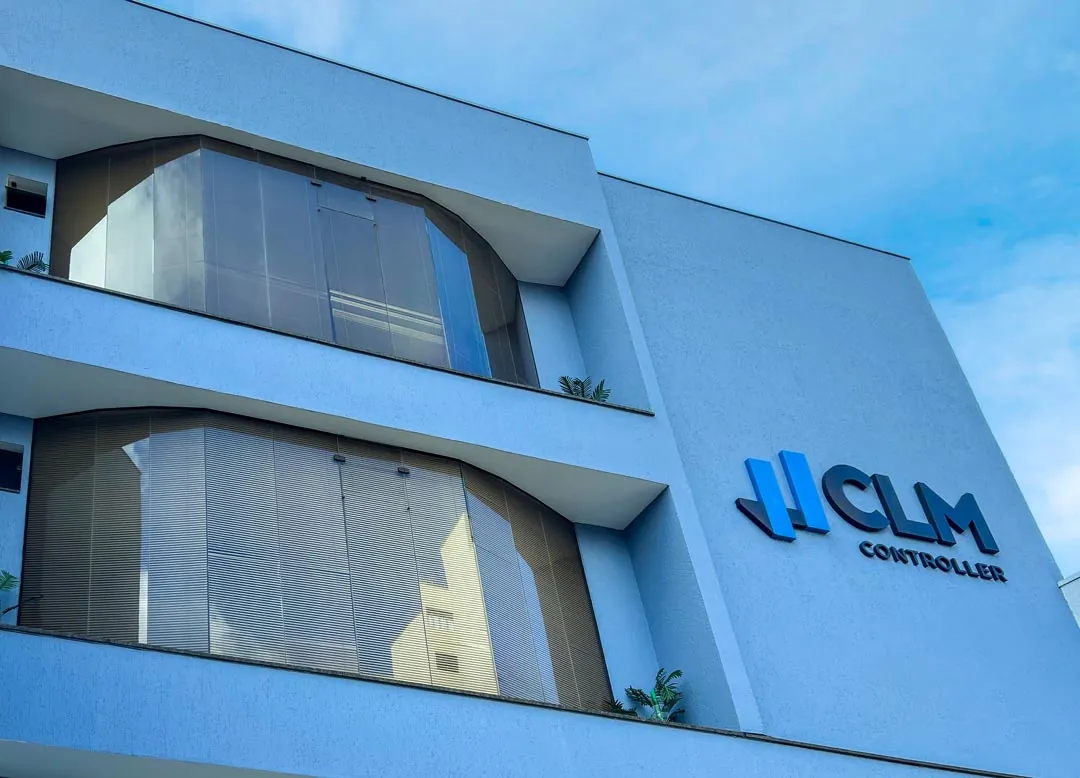Presumed Profit vs. Simples Nacional: Do you know the difference between Simples Nacional and Lucro Presumido, and which is the best tax regime for your company?
If you have any questions on the subject or are interested in finding legal solutions to pay less tax in your business, stay with us and follow this article to the end.
In this content, the CLM Controller Accounting will explain everything you need to know about Simples Nacional and Lucro Presumido. It's worth a look!
What is Simples Nacional?
Simples Nacional is a tax regime that was created by the Complementary Law 123/2006The aim is to simplify taxation for micro and small companies, i.e. businesses with an annual turnover of up to R$ 4.8 million.
One of the main features of this system is that taxes are calculated directly on the company's turnover and paid in a single monthly payment.
See which taxes can be unified in the single Simples Nacional tax form:
- IRPJ - Corporate Income Tax;
- CSLL - Social Contribution on Net Profit;
- COFINS - Contribution to the Financing of Social Security;
- PIS - Social Integration Program;
- IPI - Tax on Industrialized Products;
- ICMS - Tax on the Circulation of Goods;
- ISS - Tax on Services;
- CPP - Employer's Social Security Contribution.
Who can join Simples Nacional?
As a general rule, they can join Simples Nacionalcompanies with an annual turnover of up to R$ 4.8 million.
However, even if they meet the turnover criterion, there are some companies that cannot join the simplified regime. Check them out:
- Companies with other legal entities on their board;
- Companies with partners who own other companies whose combined turnover exceeds the limit of R$ 4.8 million;
- Corporations and financial institutions;
- Companies with partners abroad;
- Companies with activities not included in the Simples Nacional Annexes;
- Companies that have outstanding debts with the government;
- Companies that own stakes in other businesses;
- Companies with subsidiaries abroad.
What are the rates and annexes of Simples Nacional?
To give you a practical understanding, what differentiates Presumed Profit vs. Simples NacionalWe will present the rates for each system.
The Simples Nacional rates vary according to the volume of turnover and type of activity carried out by the companies.
In practice, there are 5 annexes distributed by groups of activities. The rates can vary from 4% to 33% on company turnover. Check them out!
Annex I - Trade
| Track | Revenue in 12 months | Rate | Amount to be deducted |
|---|---|---|---|
| 1ª | Up to 180,000.00 | 4.00% | - |
| 2ª | From 180,000.01 to 360,000.00 | 7,30% | R$ 5,940.00 |
| 3ª | From 360,000.01 to 720,000.00 | 9.50% | R$ 13,860.00 |
| 4ª | From 720,000.01 to 1,800,000.00 | 10.70% | R$ 22.500,00 |
| 5ª | From 1,800,000.01 to 3,600,000.00 | 14,30% | R$ 87.300,00 |
| 6ª | From 3,600,000.01 to 4,800,000.00 | 19.00% | R$ 378.000,00 |
Annex II - Industry
| Track | Revenue in 12 months | Rate | Amount to be deducted |
|---|---|---|---|
| 1ª | Up to 180,000.00 | 4.50% | - |
| 2ª | From 180,000.01 to 360,000.00 | 7.80% | R$ 5,940.00 |
| 3ª | From 360,000.01 to 720,000.00 | 10.00% | R$ 13,860.00 |
| 4ª | From 720,000.01 to 1,800,000.00 | 11,20% | R$ 22.500,00 |
| 5ª | From 1,800,000.01 to 3,600,000.00 | 14.70% | R$ 85.500,00 |
| 6ª | From 3,600,000.01 to 4,800,000.00 | 30.00% | R$ 720.000,00 |
Annex III - Services
| Track | Revenue in 12 months | Rate | Amount to be deducted |
|---|---|---|---|
| 1ª | Up to 180,000.00 | 6.00% | -- |
| 2ª | From 180,000.01 to 360,000.00 | 11,20% | R$ 9,360.00 |
| 3ª | From 360,000.01 to 720,000.00 | 13,20% | R$ 17,640.00 |
| 4ª | From 720,000.01 to 1,800,000.00 | 16.00% | R$ 35.640,00 |
| 5ª | From 1,800,000.01 to 3,600,000.00 | 21.00% | R$ 125.640,00 |
| 6ª | From 3,600,000.01 to 4,800,000.00 | 33.00% | R$ 648.000,00 |
Annex IV - Services
| Track | Revenue in 12 months | Rate | Amount to be deducted |
|---|---|---|---|
| 1ª | Up to 180,000.00 | 4.50% | - |
| 2ª | From 180,000.01 to 360,000.00 | 9.00% | R$ 8,100.00 |
| 3ª | From 360,000.01 to 720,000.00 | 10,20% | R$ 12,420.00 |
| 4ª | From 720,000.01 to 1,800,000.00 | 14.00% | R$ 39.780,00 |
| 5ª | From 1,800,000.01 to 3,600,000.00 | 22.00% | R$ 183.780,00 |
| 6ª | From 3,600,000.01 to 4,800,000.00 | 33.00% | R$ 828.000,00 |
Annex V - Services
| Track | Revenue in 12 months | Rate | Amount to be deducted |
|---|---|---|---|
| 1ª | Up to 180,000.00 | 15.50% | -- |
| 2ª | From 180,000.01 to 360,000.00 | 18.00% | R$ 4.500,00 |
| 3ª | From 360,000.01 to 720,000.00 | 19.50% | R$ 9.900,00 |
| 4ª | From 720,000.01 to 1,800,000.00 | 20.50% | R$ 17.100,00 |
| 5ª | From 1,800,000.01 to 3,600,000.00 | 23.00% | R$ 62.100,00 |
| 6ª | From 3,600,000.01 to 4,800,000.00 | 30.50% | R$ 540.000,00 |
To find out which annex your company falls into, contact us and ask our team of experts for a consultation.
Presumed Profit vs. Simples Nacional: how does the Simples Nacional calculation work?
To calculating Simples Nacional To find the amount of monthly tax to be paid through the simplified regime, you need to use the formula below:
[(RBT12 x ALIQ) - PD] / RBT12
Where:
- RBT12 - Gross Revenue for the Last 12 Months
- ALIQ - Rate (Table)
- PD - Deductible Amount Portion (Table)
Here's an example of a calculation based on the following information:
- Type of Annex: III
- Turnover in the last 12 months: R$ 200.000,00
- Billing in the current month: R$ 20.000,00
- Simples Nacional rate: 11,20%
- Deductible portion: R$ 9,360.00
Check out the calculation:
[(R$ 200,000.00 x 11.20%) - R$ 9,360.00] / R$ 200,000.00(R$ 22.400,00 - R$ 9.360,00) / R$ 200.000,00
R$ 13.040/ R$ 200.000,00
Effective Rate: 6.52%
Finally, simply multiply the month's turnover by the rate in question. So, based on our example, we would have R$ 20,000.00 x 6.52% = R$ 1,304.00.
What is Presumed Profit?
So that you can find out once and for all what the difference is between Simples Nacional and Lucro Presumido, it's time to explain how Lucro Presumido works.
As a rule, the Presumed Profit is a tax regime that can be adopted by all companies with a turnover of up to R$ 78 million per year, with the exception of those that for some reason are obliged to tax on the basis of Real Profit.
Under this regime, each tax is paid in its own form, especially IRPJ and CSLL, the amount of which is calculated based on a presumption of profit pre-defined by the tax authorities.
Who can't join Presumed Profit?
According to the legislation in force, even if they meet the turnover criterion, the following companies cannot join the Presumed Profit:
- Commercial banks;
- Investment banks;
- Development banks;
- Development agencies;
- Savings banks;
- Credit, financing and investment companies;
- Real estate credit companies;
- Securities and exchange brokerage firms;
- Securities distributors;
- Leasing companies and credit unions;
- Private insurance and capitalization companies;
- Open private pension funds;
- Companies providing credit and marketing advice, credit management, selection and risk management, accounts payable and receivable management;
- Factoring companies;
- Real estate, financial and agribusiness credit securitization institutions.
When it comes to Presumed Profit vs. Simples Nacional, it is very important to understand when a company is eligible for each scheme.
What are the Presumed Profit rates?
The rates used to calculate taxes under the Presumed Profit system are as follows:
- IRPJ: 15% on presumed profit;
- CSLL: 9% on presumed profit;
- COFINS: 3% on turnover;
- PIS: 0.65% on turnover;
- ICMS and ISS: according to local legislation.
Now that you know Presumed Profit ratesIn the next topic, we'll explain in detail the tax rates and how taxes are calculated.
Presumed Profit vs. Simples Nacional: How the Presumed Profit calculation works
In Presumed Profit, we need to calculate each tax individually, observing specific rules for each tax.
Check it out in practice, how to calculate Presumed Profit:
IRPJ - Corporate Income Tax
To calculate the IRPJ in Presumed ProfitThe first thing we need to do is check the company's type of activity and apply one of the rates below to its turnover.
| Activities | Rate |
|---|---|
| Retail sale of fuel and natural gas | 1.60% |
| - Sale of goods or products - Cargo transportation - Real estate activities - Hospital services - Rural Activity - Industrialization with materials supplied by the ordering party - Other unspecified activities (except provision of services) | 8 % |
| - Transportation services (except freight) - General services with gross revenue up to R$ 120,000/year | 16% |
| - Professional services - Business intermediation - Management, leasing or assignment of movable/immovable property or rights - Services in general, for which no specific percentage has been set | 32% |
In turn, the final rate of 15% is applied to the amount found, i.e. what the tax authorities consider to be the company's Presumed Profit, to arrive at the IRPJ amount.
Here's an example:
- Billing: R$ 100.000,00
- Activity: Sale of goods and products (trade).
IRPJ: R$ 100,000.00 x 8% (table rate) = R$ 8,000.00
IRPJ: R$ 8,000.00 x 15% (calculation rate) = R$ 1,200.00
CSLL - Social Contribution on Net Profit
To calculate CSLL under Presumed Profit, the rule is very similar to that for IRPJ, except for the difference in the rates to be used.
In this case, to find the Presumed Profit for CSLL calculation purposes, we need to use the table below:
| Activities | Rate |
|---|---|
| Trade Industry Hospital services Transportation services | 12% |
| Services in general, except hospital and transportation services Business intermediation; Management, leasing or assignment of real estate, furniture and rights of any kind. | 32% |
In turn, after finding the base value, we apply a rate of 9% to arrive at the amount of CSLL payable. See the example below:
- Billing: R$ 100.000,00
- Activity: Sale of goods and products (trade).
CSLL: R$ 100,000.00 x 12% (table rate) = R$ 12,000.00
CSLL: R$ 12,000.00 x 9% (calculation rate) = R$ 1,080.00
PIS and COFINS
Unlike the taxes we dealt with above, in Presumed Profit the calculation of the PIS - Social Integration Program and COFINS - Social Security Financing Contribution, are made directly on turnover.
To do this, simply multiply the company's turnover by the rates below:
- PIS: 0.65%
- COFINS: 3%
Here's an example calculation:
PIS: R$ 100,000.00 x 0.65% = R$ 650.00
COFINS: R$ 100,000.00 x 3% = R$ 3,000.00
Finally, ICMS and ISS are also calculated separately, taking into account the state and municipal rates applied in each case.
ISS is used in the calculation of taxation for service providers in general, and the ICMS for calculating some specific services, as well as trade activities.
But after all, Presumed Profit vs. Simples Nacionalwhich is the best option? Let's check out the answer to this question in the next topic!
Presumed Profit vs. Simples Nacional: which is the best option?
The choice between Simples Nacional and Presumed Profit depends on various factors, such as the size of the company, the sector in which it operates, its turnover and its cost structure.
Both types of taxation have different characteristics that make them more advantageous in different contexts. Understanding how everything works is very important if you want to pay less tax and avoid tax errors.
Simples Nacional
O Simples Nacional is a simplified tax regime aimed at micro and small companies with annual gross sales of up to R$ 4.8 million.
It unifies the payment of federal, state and municipal taxes in a single form, the Simples Nacional Collection Document (DAS). It also offers reduced tax rates that vary according to the sector and the company's turnover.
This system is ideal for companies with low turnover, as taxes are calculated on gross revenue.
Presumed Profit
O Presumed Profit, on the other hand, is suitable for companies with annual turnover of up to R$ 78 million, which have high profit margins.
Under this regime, the tax base is determined by a fixed percentage of gross revenue, which varies according to the branch of activity (for example, 8% for commerce and 32% for services).
Presumed Profit can be more advantageous for businesses with profit margins above the set percentage, as it allows for less tax to be paid on the actual profit of the operation.
In practice, the choice between the two regimes depends on a detailed analysis of the company's turnover, profit margin and cost structure.
Consulting an accountant is essential if you want to make the right decision and save money on your tax bill.
Lucro Presumido x Simples Nacional: pay less tax with CLM Controller
Now that you've had an overview of Simples Nacional and Lucro Presumido, it's time to get started. pay less tax in your company.
To do this, you need the support and guidance of an accountancy firm that is specialized in tax reduction.
Don't miss out, start paying less tax now! Click on the WhatsApp button and get in touch with CLM Controller Accounting.




